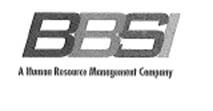CORRESP: A correspondence can be sent as a document with another submission type or can be sent as a separate submission.
Published on October 11, 2011

October 11, 2011
Submitted on EDGAR under "CORRESP"
Mr. Robert S. Littlepage
Accounting Branch Chief
Division of Corporation Finance
Securities and Exchange Commission
100 F Street, NE
Washington, DC 20549-4561
Subject: Barrett Business Services, Inc.
Form 10-K for the fiscal year ended December 31, 2010
Filed April 1, 2011
File No. 0-21886
Dear Mr. Littlepage:
We are in receipt of Larry Spirgel's letter dated September 26, 2011, regarding the subject filing. Our responses correspond to the numbered comments in the letter.
Goodwill and intangible assets, page F-9
1. We note your response to comment one from our letter dated August 23, 2011. In order that we may better understand how your CODM reviews your operations as described in your response, please provide us with all reports that are provided to your CODM. Additionally, please provide us a management organizational chart, including a more detailed organizational chart depicting your branches.
Response:
Under separate cover, we are forwarding by air courier paper copies of the reports you have requested as follows:
· Organizational chart
· Monthly income statement – entity level
· Monthly balance sheet
Mr. Robert S. Littlepage
Page 2
· Monthly actual versus forecast – only prepared at the entity level
· Weekly activity report – entity wide
· Weekly activity report – summarized by zone
· Weekly activity report – summarized by branch
· New business report
· Current customers with $5,000 or more AR out of terms by 5 days or more
The foregoing documents will be accompanied by an application for confidential treatment as provided in Rule 83 (17 CFR §200.83) pursuant to the Freedom of Information Act.
The CODM also has electronic access to monthly individual branch income statements. These statements are only sporadically reviewed by the CODM as this level of the business does not provide the most effective point from which to manage the operations of our business.
As noted in our previous response, for the year ended December 31, 2010 we determined we have one operating segment in accordance with paragraph 280-10-50-1 of the ASC. The following summary of our analysis of the criteria of ASC paragraph 280-10-50-1 addresses how the reports identified above are utilized by our CODM and describes our overall conclusion that we have only one operating segment. We have also included our consideration of reporting units as required by ASC 350-20-35.
|
Paragraph |
Analysis |
|
ASC 280-10-50-1 As defined in that paragraph, an operating segment is a component of a public entity that has all of the following characteristics: |
|
|
ASC
280-10-50-1(a) It engages in
business activities from which it may earn revenues and incur expenses
(including revenues and expenses relating to transactions with other
components of the same public entity). |
The question of whether or not the branch operations are engaged in the generation of revenue or incur expenses requires further analysis. While it is clear we incur expenses related to branch personnel, it is not clear that the branches generate revenue. While branch personnel facilitate payroll processing and customer service, the ultimate delivery of the services occurs through a centralized information system and the revenues are collected through our corporate office. The funds for payroll costs, operating costs and servicing workers’ compensation claims are distributed out of our corporate accounts. Aside from the customer contact element, there are no limitations on our ability to service any of our customers from any branch. This indicates our customers are customers of BBSI and not of a specific branch. Our view of the business model and approach to managing significant risks and expenses are at the entity level. Similar to certain concepts described in ASC 350-20-35 related t0 consideration of components and reporting units, there simply is not enough economic diversity in our branch operations to justify managing the business at the branch level.
|
|
ASC
280-10-50-1(b) Its operating
results are regularly reviewed by the public entity's chief operating
decision maker to make decisions about resources to be allocated to the
segment and assess its performance. |
Operating results are regularly reviewed by our CODM. As noted above, the CODM has access to financial information for the Company as a whole, geographic zones and our branches. The information received routinely relates only to revenue and the related direct costs of payroll and workers’ compensation. Branch administrative costs are a significant component of our business but are not regularly reviewed by our CODM. Our branch managers have primary responsibility for these costs and the regular monitoring at the branch level. There is no active management or decisions made by geographic zone. In summary, we have concluded that our CODM is not regularly reviewing sufficient information to make branch level resource allocation decisions, nor do we intend that meaningful resource allocation decisions will be made at the branch level.
|
Mr. Robert S. Littlepage
October 11, 2011
Page 3
|
ASC 280-10-50-1(c) Its discrete financial information is available.
|
The documents listed above show that we produce information at the entity level, by geographic zone and by branch. From an operational perspective, we have no organizational structure by zone. This information is produced only to provide market information at a more summarized level. We do not maintain complete financial statements for our branches and there is no additional information for the geographic zones beyond the high level revenue and payroll data included in the reports above.
|
|
350-20-35-34 A component of an operating segment is a reporting unit if the component constitutes a business or a nonprofit activity for which discrete financial information is available and segment management, as that term is defined in paragraph 280-10-50-7, regularly reviews the operating results of that component. Subtopic 805-10 includes guidance on determining whether an asset group constitutes a business.
350-20-35-35 Two or more components of an operating segment shall be aggregated and deemed a single reporting unit if the components have similar economic characteristics. Paragraph 280-10-50-11 shall be considered in determining if the components of an operating segment have similar economic characteristics.
350-20-35-36 An operating segment shall be deemed to be a reporting unit if all of its components are similar, if none of its components is a reporting unit, or if it comprises only a single component. |
As noted in paragraph 34, a component of an operating segment is a reporting unit if discrete financial information is available and the CODM regularly reviews the operating results of that component. Paragraph 35 further clarifies that two or more components should be deemed a single reporting unit if all of the components have similar economic characteristics.
In our business, our branches are our components. In applying the requirements of the ASC we have concluded that there is discrete (albeit limited) financial information available for our branch operations. However, as noted above, these results are not regularly reviewed by our CODM. Further, our branch operations provide the same services at all locations and share very similar economic characteristics. Based on our evaluation, we have concluded that our entity as a whole, in addition to being our only operating segment, is our only reporting unit.
|
Based on these considerations, we have concluded that we have only one operating segment, as some of the characteristics of an operating segment are not present in our branches. We have also concluded that we do not have any identifiable reporting units below our one operating segment.
Mr. Robert S. Littlepage
October 11, 2011
Page 4
Fair Value of Financial Instruments and Concentration of Credit Risk, page F-17
2. As set forth in comment three from our letter dated June 30, 2011 and reiterated in part in comment three of our letter dated August 23, 2011, please include the following in your proposed disclosure:
For each class of security with fair value measurements using significant other observable inputs (Level 2)
· Please include a description of the valuation technique (or multiple valuation techniques) used, such as the market approach, income approach, or the cost approach, and the inputs used in determining the fair values of each class of assets or liabilities.
· If there has been a change in the valuation technique(s) (for example, changing from a market approach to an income approach or the use of an additional valuation technique), please disclose that change and the reason for making it.
Please provide us your proposed disclosure.
Response:
Our proposed disclosure is as follows:
In determining the fair value of our financial assets, the Company predominately uses the market approach. In determining the fair value of its municipal bonds, corporate bonds, and variable rate demand notes classified as level 2, the Company utilizes the services of an independent third party. The third party’s fair value assessment is based upon observable market prices in less active markets or quoted market prices for securities with similar credit characteristics and rates traded in an active market.
Please feel free to call me at 360-828-0700 if you have any questions regarding the information contained in this letter.
